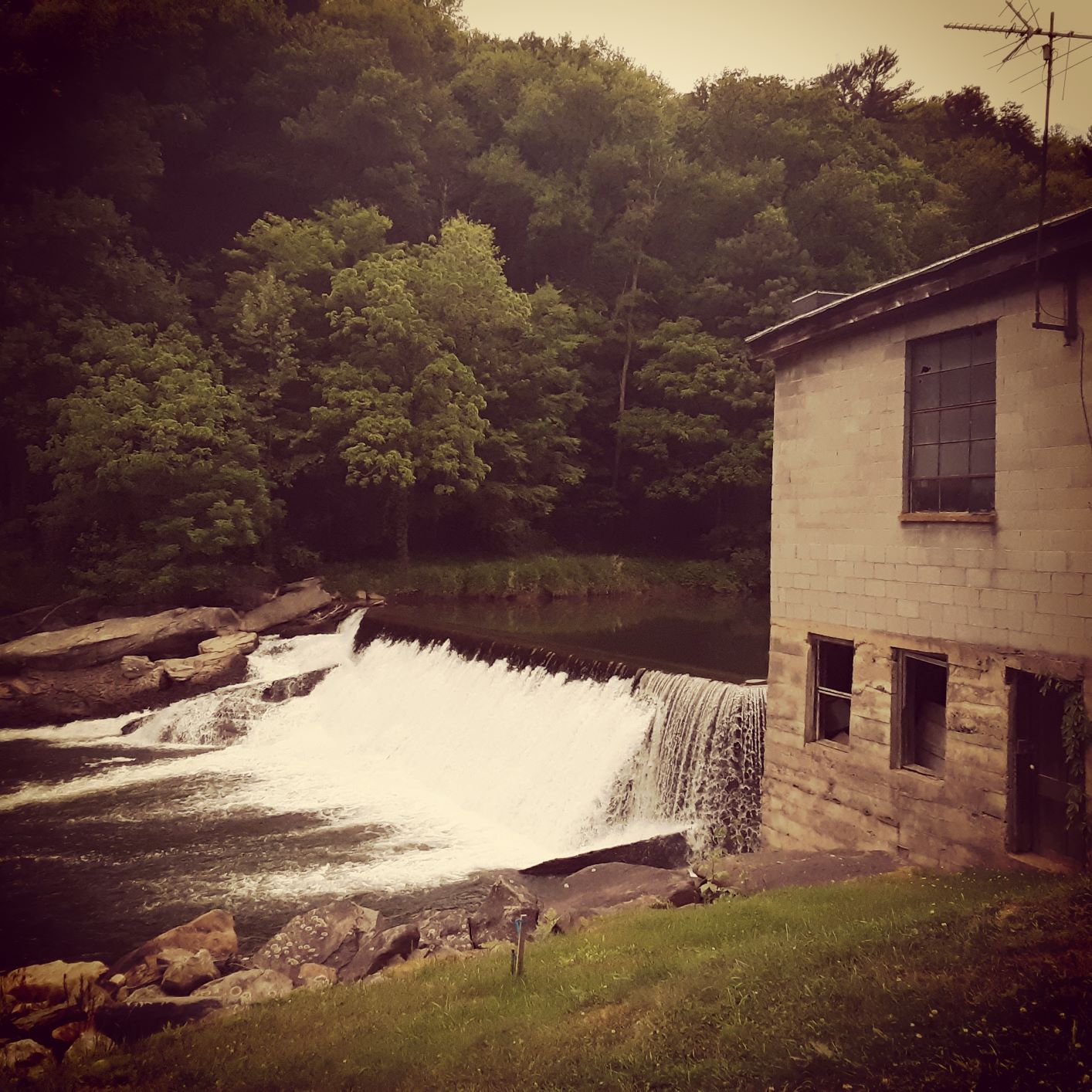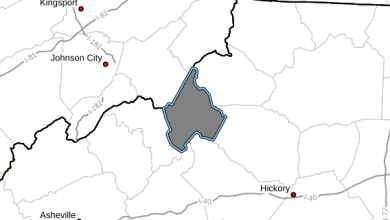
Last Updated on March 26, 2022 2:51 pm

Originally published and used by permission of OnTheWatauga.com
The historic dam at the Ward’s Mill along Watauga River near Sugar Grove is being removed this year.
“That is the plan,” said Virginia Ward, adding that the future removal will be bittersweet.
“You know it will be okay to let it go. It will open the river and I believe that will be good … but it’s a bit sad, too. We have multiple emotions. Let’s put it that way.”
Virginia is married to Ray Ward, and they have lived along Watauga River Road, directly across from the dam, for decades. Ray’s grandfather initially built the dam out of hemlock logs in 1905 and powered mills with water from the Watauga River. This was the only dam to withstand the historic 1940 flood.
Then Ray’s father, Ben, a brilliant innovator and self-taught engineer, built and operated his own mill on the same spot of the Watauga River after returning from World War I.
Decades later, Ben improved the dam and re-built it out of concrete, according to an account of Ben’s life and the Ward’s Mill Dam in a 1975 Foxfire publication. Much of the history in this article comes from the Foxfire article.
Up until his death in 1970, Ben milled an estimated 25 million board feet of lumber and to help replace those trees, he also planted 100,000 poplar and pine trees.
He supplied power to 15 homes for $1 per month and a church for free until a power company came through, and Ben was no longer allowed to supply power to neighbors.
After this regulation, the Ward’s Mill Dam only powered the saw mill on the property and Ward’s home. Excess energy was sold to Blue Ridge Electric Membership Corporation, according to Federal Energy Regulatory Commission (FERC) documents. The FERC regulates hydroelectric dams.
When the dam was in operation, it produced 375,403 kWh annually.
The mill also offered jobs to those in the area, and scraps from the mill provided firewood to many members of the community during the harsh winter months.
“At one time it was a breadbasket for the community,” Virginia said. “But times have changed and it just doesn’t really have usefulness anymore. That kind of helped him make the decision.”

Other contributing factors were that Ray was getting older. As time goes on, maintaining the complex machinery behind the power-producing dam will become more difficult. While the dam produced power until a couple years ago when the license was surrendered, the mill hasn’t been operating commercially for some time, perhaps a decade or more.
Also, the latest federal license in 2017 came with more restrictions than the previous 30-year license, something Virginia Ward acknowledged.
When Ward’s 30-year license to operate his hydroelectric dam was set to expire a few years back, he went through the FERC renewal process.
In 2017, the FERC approved the application and another 30-year license for Ward’s dam along the Watauga River. The license was contingent upon a number of conditions that you can read all about in the FERC ruling approving the license.
However, a few months after the license was approved, Ward filed to surrender the license:
“Due to the requirements of the new license and certain circumstances of the licensee, the licensee has declined to accept the license as issued and requests to surrender the project. The licensee plans to disconnect the generating units from the utility interconnection point, remove the generators and turbines, and sell the equipment. All anticipated changes will remain within the existing powerhouse. No changes to the exterior of the powerhouse are planned.”
Failing to renew the application requires the dam to be removed.

Andy Givens, a utilities consultant out of Raleigh, represented the Ward family during the license renewal process. He last spoke to them in April or May of this year.
Givens said that the Ward family signed a contract or memorandum of understanding with American Rivers, an organization that intervened in the initial license renewal.
Givens said that the contract or MoU took the burden of removing the concrete and log dam off of the Ward family and onto American Rivers and its partners.
A regional coordinator for American Rivers declined to offer immediate comment and said a release regarding this dam removal would be forthcoming at a later date.
In July 2019, American Rivers announced that it was working on a project to remove the Ward’s Mill Dam in a 20-year anniversary post for the organization. But it didn’t provide much details, only the following snippet:
“This summer American Rivers staff and partners in North Carolina are kicking off a project to remove the Ward’s Mill Dam, which is the #1 ranked dam in the North Carolina barrier prioritization tool. This project will improve public safety, habitat for eastern hellbenders and freshwater mussels and recreation.”
One of the goals of American Rivers, a conservation nonprofit, is to remove dams and restore rivers to their natural way of flowing. The nonprofit’s website states that dams damage rivers in four ways:
- Dams block rivers
- Dams slow rivers
- Dams alter habitat
- Dams impact water quality
The American Rivers website notes that dams are usually removed via excavation. In rare circumstances explosives are used. It is unclear so far how the Ward Dam will be removed and how long the removal process will take.
According to the American Rivers website, the removal process could take days, months or years depending on the size of the project, the material the dam is made of and also to “manage things like sediment released from the former impoundment.”
Andy Hill, the Watauga Riverkeeper with MountainTrue, a conservation group in Western North Carolina, confirmed that it was partnering with American Rivers to remove the dam. Out in the field, he wasn’t immediately available to talk at length.
Though an exact date isn’t determined for the dam removal, Hill said it should happen sometime later this year.
Click to read more history of Ben Ward and the mill and dam along the Watauga River.
Click to On the Watauga for more news and adventures along the Watauga River.



















